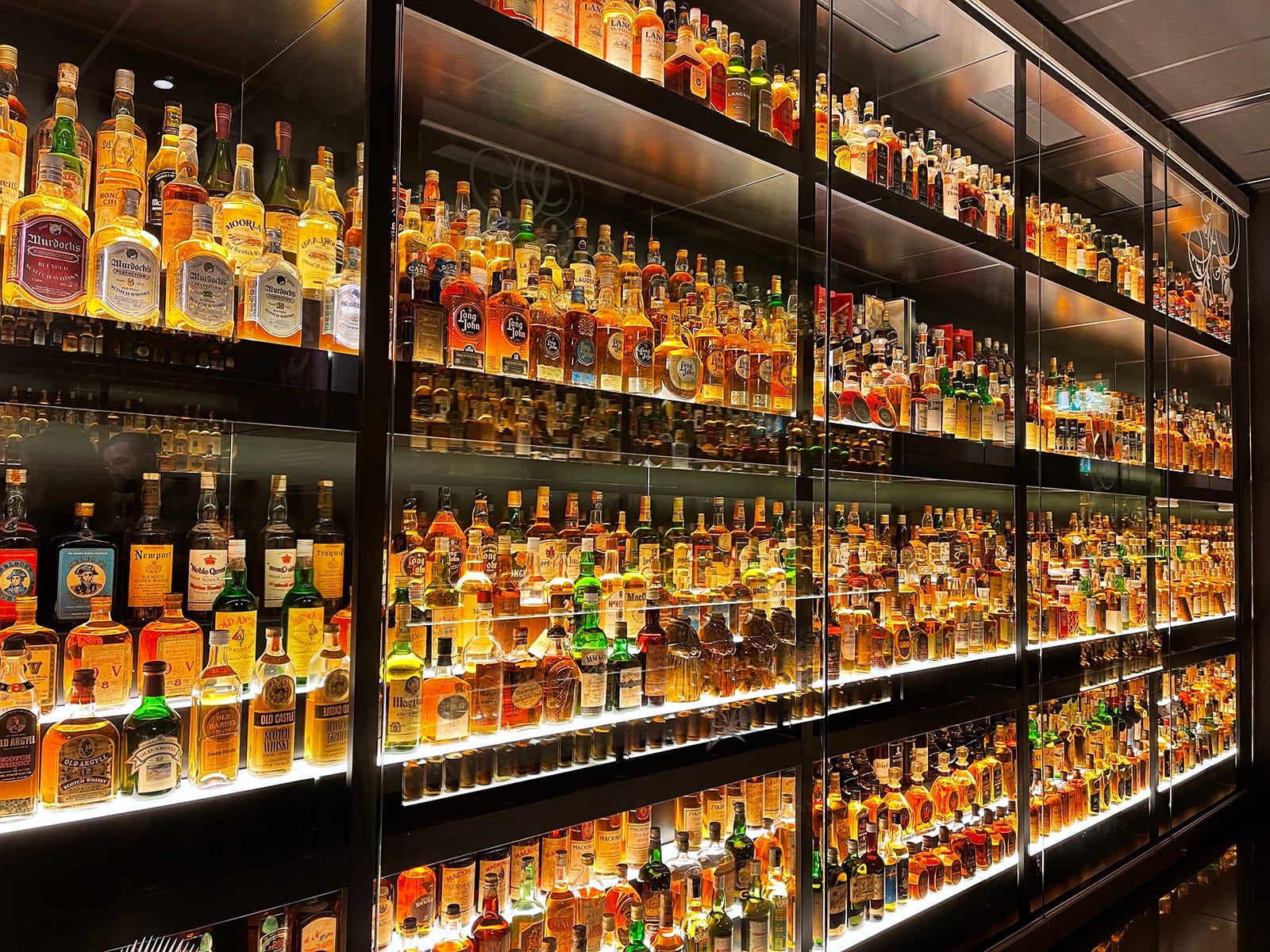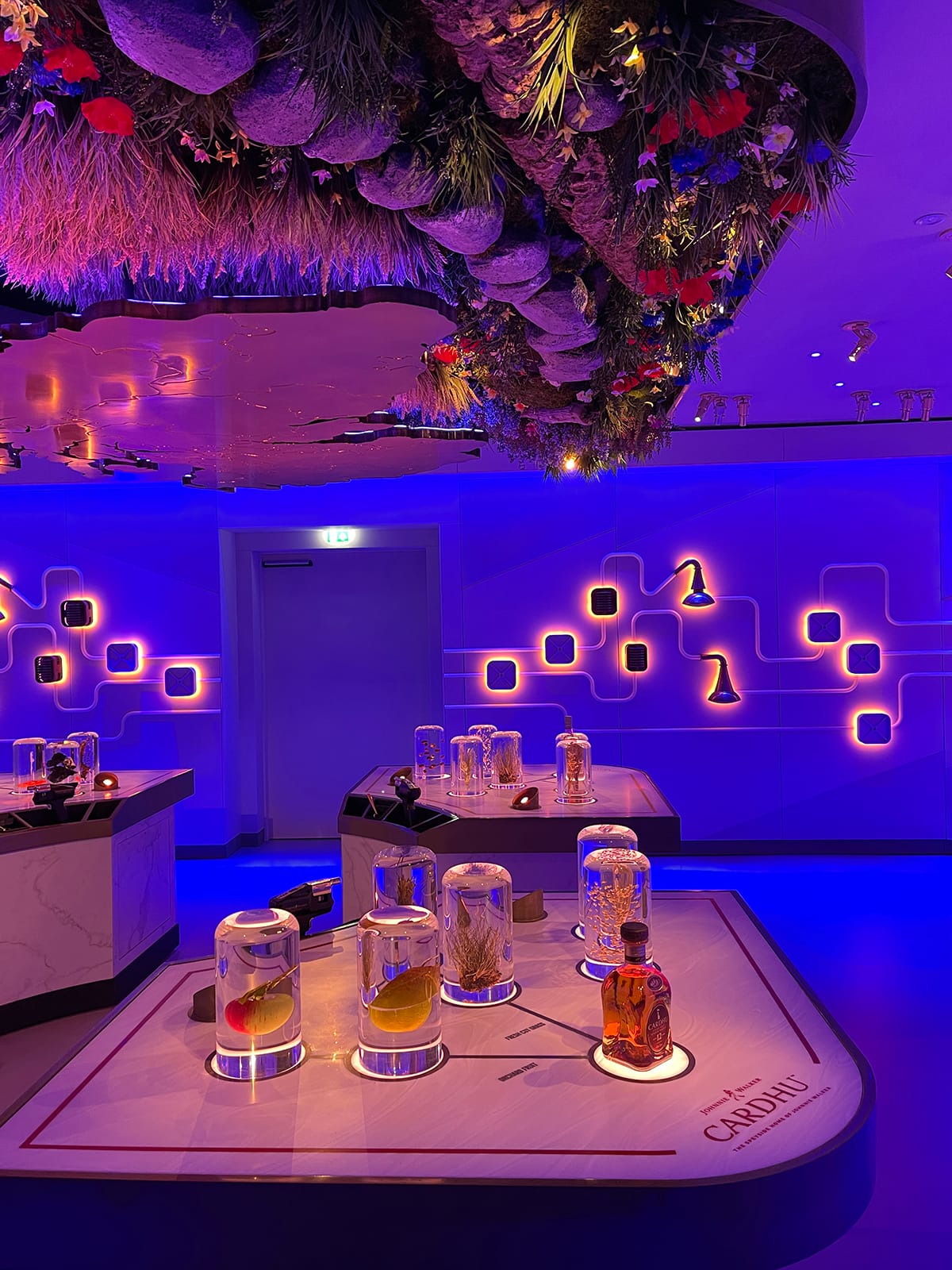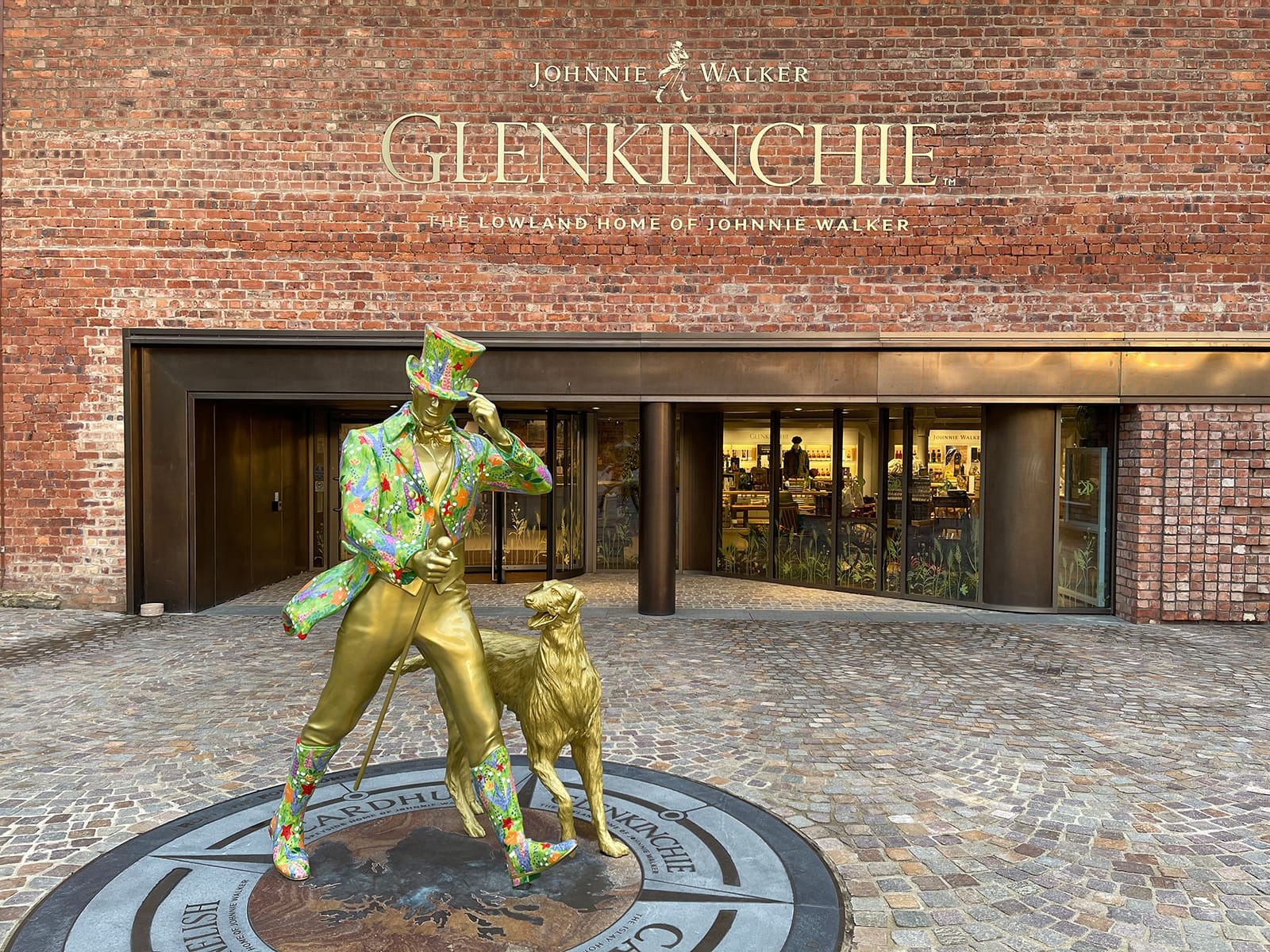“The air in this room is saturated with whisky, so take a deep breath!” says our guide Jethro, as we step into the chilled chambers of the star attraction at Edinburgh’s Scotch Whisky Experience: a trove of golden, amber and tawny elixirs, arranged on shelves from floor to ceiling, displayed behind glass and lit from below, like rare jewels strictly to be admired.
“The collection in total contains, and I want you to be impressed with this number, 3,384 bottles of whisky,” announces Jethro with theatrical flair. “All of them are unique — and none of them have ever been opened.” The very oldest is a Buchanan’s dating back to 1897.
Believed to be one of the biggest whisky collections anywhere, the cache was once the idiosyncratic hobby project of Brazilian businessman Claive Vidiz, who amassed it over 35 years, after being gifted with a half-dozen bottles of Scotch in 1971. As for why he never sipped a single one: “He was told, ‘Don’t open them until you find someone who can appreciate them, until you have an occasion that’s worth opening them for,’” quips Jethro.

Acquired by mega British liquor maker Diageo, the collection found its way back to its spiritual home in Scotland in 2009, where more than 1.5 million whisky enthusiasts have gawked at it since. It’s a spectacle but also a priceless historical record for one of the country’s defining goods.
More than 130 working whisky distilleries are sprinkled across Scotland, and while they all rely on the same three basic ingredients — barley, water and yeast — the flavours can be pushed in wildly different directions. There are five whisky-making regions in the country, each with their own personality. Sip a pale dram on the softer side and you might have a “Lowland lady.” Sample a Scotch reminiscent of an ashtray and you might have a smoky Islay special.
It all sounds rather enigmatic to me, an untutored, casual-at-best enjoyer of whisky. But if there’s anything I might learn at Johnnie Walker Princes Street, Edinburgh’s latest tourist attraction, it’s that the spirit isn’t reserved for staid and wizened aficionados who insist on sipping it neat by a roaring fire.
Opened in September 2021, with Prince Charles among the earliest sightseers, the eight-floor destination is home to a glossy retail flagship with impossible-to-get-elsewhere cask editions and custom bottle engraving, a rooftop restaurant that gazes upon Edinburgh Castle next door, and a cocktail lounge where you can order a “Smoky Giggle Juice” (whisky with a scoop of ice cream, in cheeky defiance of the purists).
The attraction also promises myth-busting and entertainment, with new twists on the traditional whisky tour: more high-tech, more tailored and more amusing. The 90-minute “Journey of Flavour” experience begins with a pop quiz on a tablet, to suss out my personal palate: “Can we tempt you with a piña colada?” it asks. (Only on holiday, I demur.)

The tool deduces that I prefer my drams smoky, which will guide the cocktails I’m served. The tour comes with three drinks of choice (any or all can be Seedlip-substituted to be non-alcoholic), like a fizzy, bonbon-sweet highball spiked with cold brew coffee and cream soda, or a spicy old-fashioned with crystallized ginger.
This isn’t your grandpa’s Scotch; it’s an effort to win over new fans, and draw ones from all over the world here, which shouldn’t require much persuasion. Pre-pandemic, tourism to the country’s distilleries had reached a high — a record 2.16 million visits in 2019, according to the Scotch Whisky Association.
The new Johnnie Walker attraction is part of Diageo’s overall £185-million ($314-million) investment in supercharging whisky tourism. Some of the dollars have been poured into revamping its distilleries, inside and out, and upgrading the visitor experiences.
A 40-minute drive from Edinburgh brings me to Glenkinchie, the first of a dozen Diageo distilleries to be spruced up. I’m welcomed by a statue of Johnnie Walker’s famous striding, hat-tipping figure, this one hand-painted with wildflowers by Edinburgh artist Angela Johnston. It’s a nod to the bucolic setting in East Lothian — known for its bounty of fruit orchards, fields of golden barley and blooms — which also inspired the distillery’s new, 35,000-square-foot garden space.

I’m here to try my hand at the cocktail masterclass, under the tutelage of our affable mixologist, Connor, who talks us through some more whisky history before schooling us in techniques. “The art of distilling came to Scotland from Ireland, mainly through a family of physicians called the Beatons in the 1300s,” he explains, “and what they were producing was meant to be consumed as medicine, but as you can see from the picture, they look like they’re having way too much fun.”
And why shouldn’t whisky be fun? I wonder as Connor demos the most advanced move of the day — agitating and aerating our own apple-cinnamon whisky sour with enough intensity to fluff up the aquafaba, which seems to call for full-body, up-down-all-around, giggle-inducing choreography with our Boston shaker (while trying to avoid accidentally dousing a neighbour).
My efforts leave no doubt that I shouldn’t quit my day job, but I come away with the lesson anyway: whisky need not be the strictly serious endeavour of lifelong collectors or saved for special occasions. It can just be appreciated exactly as you like it, all in good fun.
Where to explore whisky in Scotland
Here, the differences between the five Scotch regions.
Highland: By sheer geographical size, this is the biggest whisky region in the country, and it’s noted for the widest range of styles. The Glenturret, which claims the title of Scotland’s oldest working distillery (dating back to at least 1763), is here.
Speyside: If judging by production, this is the largest whisky region in Scotland, thanks to all the warm, dry, barley-nurturing weather. It’s home to roughly half the country’s distilleries — and the Malt Whisky Trail will point you toward nine key locations, all offering guided tours, including Cardhu.
Lowland: Encompassing Edinburgh, this region is noted for its pretty countryside, as well as single malts on the light, sweet and floral side — hence the nickname “Lowland ladies,” to describe its whiskies. Glenkinchie is among the most popular distilleries.
Campbeltown: This is Scotland’s littlest whisky-producing region; it’s a small coastal town with just three distilleries left, including historic Springbank. But the uniqueness of its single malts, noted for robust, briny, sometimes peaty flavours, sets it apart.
Islay: For connoisseurs of the smokiest whiskies, the 40-kilometre-long, salt-sprayed isle of Islay (“eye-luh”) is the source. Known for its dramatic coastal landscape, it’s famously peaty. The nine working distilleries include Bowmore, founded in 1779.
Wing Sze Tang travelled as a guest of Johnnie Walker, which did not review or approve this article.
Originally published in the December 4, 2021 issue of the Toronto Star.






